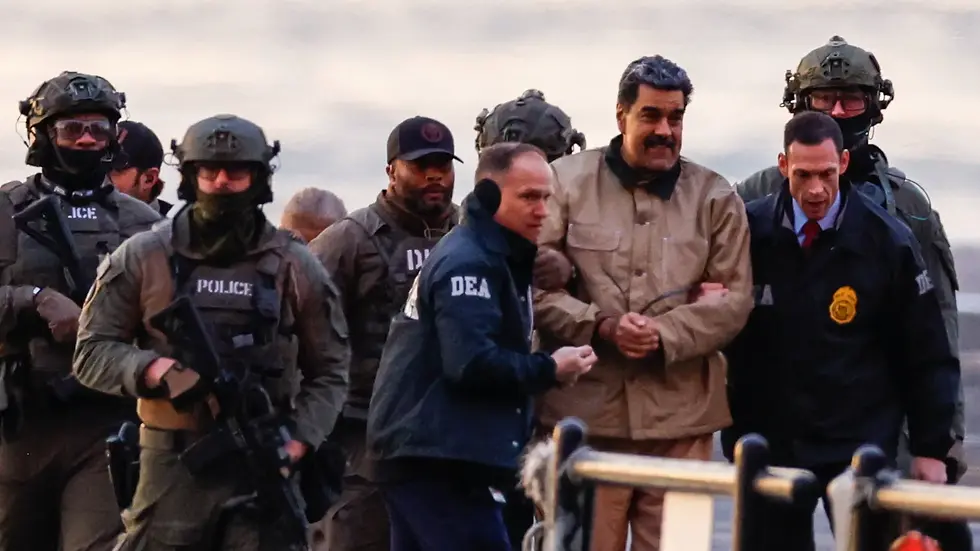Solitary Confinement Amounts to Cruel and Unusual Torture
- mcoswalt
- Feb 2, 2021
- 4 min read
by Sophie Trist
—
Many people are familiar with the tragic story of Kalief Browder, a Black teenager from New York City who was arrested in 2010 for allegedly stealing a backpack and spent three years on Rikers Island before his case was dismissed in 2013. During his incarceration, Browder spent over two years in solitary confinement, which caused significant damage to his mental health. After his release, Browder attempted to resume normal life, but due to crippling anxiety and paranoia, he was in and out of psychiatric hospitals. In 2015, Kalief Browder, who had attempted suicide several times during and after his stints in solitary confinement, took his own life.
When an inmate is subjected to solitary confinement, he or she is locked in a cell — typically about the same size as an elevator — for up to twenty-three hours a day, with minimal human contact, virtually no access to rehabilitative or educational programs, and extremely limited physical and mental health treatment. The United Nations Convention Against Torture defines torture as “any state-sanctioned act “by which severe pain or suffering, whether physical or mental, is intentionally inflicted on a person” for information, punishment, intimidation, or for a reason based on discrimination.” Nils Melzer, a UN special rapporteur on torture, writes that his mandate has long caused him to be concerned about the excessive, arbitrary use of solitary confinement across the world, but especially in the United States. Such deprivation is extremely detrimental to both physical and mental health and amounts to torture. We must end the dehumanizing practice of solitary confinement because people’s lives are at stake.
According to a 2017 survey, roughly 61,000 men, women, and children are confined in isolation across the country. However, this figure is likely a very low estimate, as it does not take into account inmates in local jails, juvenile facilities, or immigrant detention centers. Like most human rights abuses, solitary confinement is difficult to track because there’s no federal reporting system in place to determine how many people are being isolated at one time. As with every measure of incarceration in the United States, people of color are overrepresented in solitary confinement. There is an assumption that solitary confinement, like the death penalty, is reserved for only the worst of the worst, but the truth is that prisoners have spent months or even years in solitary for relatively minor offenses, such as stealing a pack of cigarettes or talking to a suspected gang member.
The UN’s Mandela Rules stipulate that solitary confinement should not be used against youth or people with disabilities and that no one should be isolated for longer than fifteen days. Despite this, it is estimated that between one-fifth and one-third of prisoners in solitary confinement struggle with mental illness before they are isolated. But if inmates aren’t mentally ill when they go in, they’re almost sure to be when they come out. Stuart Grassian, a psychiatrist from Harvard Medical School, has interviewed hundreds of inmates who survived solitary confinement, and he concludes that extensive isolation can lead to visual and auditory hallucinations, panic attacks, chronic insomnia, hypersensitivity to external stimuli, a loss of impulse control, development of paranoid obsessions, and loss of cognitive and memory abilities. In a study of California inmates between 1999 and 2004, Grassian discovered that people in solitary confinement made up nearly half of the prison system’s suicides. A 1995 study of the federal prison system revealed that 63% of inmate suicides occurred among those who had experienced long-term isolation.
The adverse mental health effects of solitary confinement are demonstrably worse for juveniles, whose brains are still developing and thus have a greater need for socialization. A sixteen-year-old Florida teen held in isolation for four months took up self-harming because, she told Ian M. Kysel of The Washington Post, “It is the only release of my pain.” Leno Silva, who experienced solitary confinement as a child, describes it thus in a 2014 report by the American Civil Liberties Union: “Being in a room for over twenty-one hours a day is like a waking nightmare, like you want to scream but you can’t.” DOJ research found that more than 60% of young people who died by suicide in prison had a history of being held in solitary confinement. If parents confined their children to a small, non-air-conditioned room for twenty-three hours a day with no human contact, it would be called child abuse.
Solitary confinement had its heyday in the 1990s and early 2000s when the United States developed “tough on crime” policies which scoffed at rehabilitation as useless and ineffective. Fortunately, the past few years have seen meaningful efforts to restrict or eliminate this form of torture. In 2016, President Obama called solitary confinement “an affront to our common humanity.” In 2019, despite a resurgence in dehumanizing rhetoric against incarcerated people, twenty-eight states introduced legislation to limit solitary confinement, and twelve states passed laws that do things like limiting isolation to a maximum of twenty days and prohibiting isolation for vulnerable populations such as young people, pregnant and postpartum people, the elderly, and people with disabilities. In 2020, Louisiana, which holds people in solitary confinement at rates four times the national average, introduced a bill to ban solitary confinement for pregnant people in all but the most extreme cases. The ability to exist in a community and access education and rehabilitation programs should not be regarded as a privilege for incarcerated men, women, and children, but a basic human right. President Obama was absolutely right to call long-term, abusive use of solitary confinement “an affront to our common humanity.” Creating a culture of life means doing away with these torturous practices and implementing restorative justice models which put the inalienable human dignity of both victims and offenders at the center of our social discourse and policies.



Comments